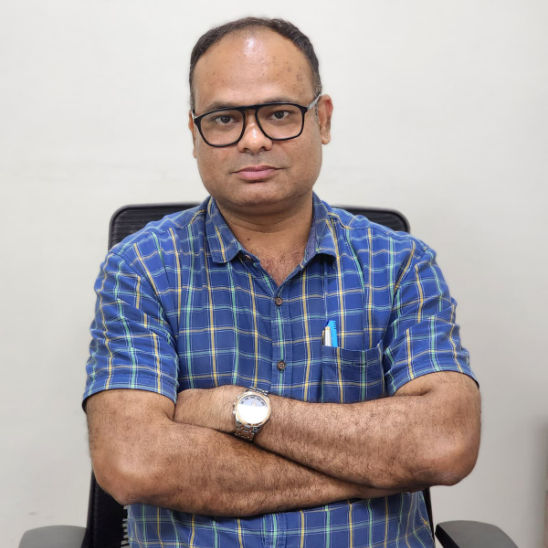Guide to Non Invasive Procedure Can Improve Depression
Explore groundbreaking non-invasive procedures for treating depression like TMS and tDCS. Learn how these advanced treatments offer hope for those with treatment-resistant depression.

Written by Dr. Rohinipriyanka Pondugula
Reviewed by Dr. Shaik Abdul Kalam MD (Physician)
Last updated on 17th Sep, 2025

Introduction
For millions living with depression, the journey to wellness can feel like a revolving door of antidepressant medications and talk therapy. While these are effective cornerstone treatments, they don’t work for everyone. Some experience debilitating side effects, while others find little relief—a condition known as treatment-resistant depression. If you’ve felt discouraged by these limitations, a new frontier in mental health offers compelling hope. This guide explores the groundbreaking world of non-invasive procedure options designed to improve depression by directly targeting the brain's neural circuits. We’ll demystify how treatments like TMS and tDCS work, examine their impressive success rates, and help you understand if you might be a candidate for these innovative approaches to healing.
Understanding Depression and the Limits of Traditional Treatment
Depression is more than just sadness; it's a complex medical condition that affects brain chemistry, neural pathways, and overall functioning. For decades, the primary lines of defense have been psychotherapy and antidepressant medications (SSRIs, SNRIs).
What is Treatment-Resistant Depression (TRD)?
Treatment-resistant depression is typically defined as a major depressive disorder that does not respond adequately to at least two different antidepressant medications of adequate dose and duration. It’s estimated that up to 30% of individuals with depression fall into this category, leaving them feeling hopeless and without options.
The Drawbacks of Medication and Talk Therapy
While invaluable, these treatments have limitations. Medications can cause side effects like weight gain, sexual dysfunction, and nausea, leading many to discontinue use. They also work systemically, affecting the entire body. Psychotherapy requires significant time, effort, and financial investment, and its effectiveness can depend heavily on the therapist-client relationship and the type of therapy used.
Consult a Psychiatrist for the best advice
What Are Non-Invasive Neuromodulation Procedures?
Neuromodulation is a revolutionary field that uses targeted stimulation to directly regulate and normalise brain activity. "Non-invasive" means the procedures are performed externally, without surgery, implants, or any need for anesthesia. They represent a middle ground between medication and more invasive surgical options, offering a way to reset the brain networks implicated in depression with minimal systemic side effects.
Deep Transcranial Magnetic Stimulation (dTMS)
How Does dTMS Work? A Look Inside the Brain
dTMS uses powerful, focused magnetic pulses—similar to those used in an MRI machine—to stimulate nerve cells in the brain regions involved in mood regulation, particularly the prefrontal cortex. These pulses induce a small electrical current, which can "activate" underactive neurons, essentially encouraging the brain to re-establish its natural balance and form new, healthy neural pathways—a process known as neuroplasticity.
The dTMS Treatment Experience: What to Expect
During a session, you sit in a comfortable chair while a technician places an electromagnetic coil against your scalp. The device is then activated, delivering pulses. You’ll hear a clicking sound and feel a tapping sensation on your head. Each session lasts about 20-40 minutes, and you can immediately return to your daily activities afterward. A typical treatment course involves sessions five days a week for 4-6 weeks.
Efficacy and Success Rates of dTMS Therapy
Clinical studies and real-world data are robust. The FDA-cleared dTMS system (BrainsWay Deep TMS) has demonstrated significant success. A large-scale study showed that over 50% of patients with treatment-resistant depression experienced a significant improvement in their symptoms, and about one-third achieved full remission. These results are sustained for many patients over the long term.
Potential Side Effects and Safety Profile
dTMS is exceptionally well-tolerated. The most common side effect is mild scalp discomfort or headache during or after treatment, which usually fades quickly. Unlike electroconvulsive therapy (ECT), it does not cause seizures or memory loss. It is a safe non-invasive procedure with a very low risk profile.
Transcranial Direct Current Stimulation (tDCS)
The Science Behind tDCS: A Gentle Electrical Nudge
Where dTMS uses magnetic pulses, tDCS uses a constant, low-intensity electrical current delivered via electrodes placed on the scalp. This current doesn’t cause neurons to fire but rather modulates their readiness to fire. For depression, the anode (positive electrode) is typically placed over the left prefrontal cortex to increase cortical excitability in that underactive region.
Using tDCS: Clinical vs. At-Home Devices
tDCS can be administered in clinical settings, but its simplicity has also led to the development of prescription home-use devices. This accessibility is a major advantage, allowing for more frequent and convenient treatment schedules. However, it is crucial to use these devices only under the guidance and prescription of a qualified physician.
Effectiveness of tDCS for Depressive Symptoms
Meta-analyses of numerous clinical trials conclude that tDCS has a significant antidepressant effect compared to sham (placebo) treatment. While its effect size might be slightly lower than dTMS for acute treatment-resistant cases, its accessibility and excellent safety profile make it a valuable option, particularly for mild-to-moderate depression or as a maintenance therapy.
Non-Invasive Vagus Nerve Stimulation (nVNS)
The Mind-Body Connection: Your Vagus Nerve and Mood
The vagus nerve is a critical information superhighway connecting the brain to major organs like the heart, gut, and lungs. It plays a key role in regulating the parasympathetic nervous system ("rest-and-digest"). Invasive surgical VNS has been FDA-approved for years, but non-invasive devices now stimulate the nerve through the skin, typically at the neck or in the ear.
How Non-Invasive Vagus Nerve Stimulation is Administered
A handheld device with electrodes is placed on the neck over the vagus nerve. It delivers a mild electrical stimulation that travels to the brainstem, influencing mood centers like the limbic system. This procedure is painless and can be self-administered for short periods multiple times a day.
Who is a Good Candidate for These Procedures?
Ideal candidates are generally adults diagnosed with major depressive disorder who have not experienced satisfactory improvement from at least one antidepressant medication. A thorough evaluation by a psychiatrist is essential to determine the best course of action. These treatments are not typically recommended for individuals with certain metallic implants in the head or a history of seizures.
The Importance of a Holistic Approach
These technologies are powerful tools, but they are not magic cures. The most successful outcomes occur when they are part of a comprehensive treatment plan.
Integrating Procedures with Therapy and Lifestyle Changes
Neuromodulation can create a window of opportunity—a lift in mood and energy—that makes a person more receptive to psychotherapy. Combining dTMS with cognitive behavioural therapy (CBT), for instance, can help patients build healthy coping skills on the foundation of improved brain function. Likewise, prioritising sleep, nutrition, and physical activity supports overall brain health and resilience. If your condition does not improve after trying these methods, it may be time to discuss next steps with a specialist. You can consult a doctor online with Apollo24|7 for further evaluation and to see if you are a candidate for these advanced treatments.
Taking the Next Step: How to Talk to Your Doctor
If you're interested in exploring these options, start a conversation with your psychiatrist or primary care physician. Come prepared:
- "I've been struggling with my current treatment for depression and have read about non-invasive options like TMS. Am I a candidate?"
- "Can you refer me to a psychiatrist who specialises in neuromodulation therapies?"
- "What are the potential costs, and is this likely to be covered by my insurance?"
Conclusion: Expanding the Horizon of Mental Healthcare
The development of non-invasive neuromodulation represents a paradigm shift in how we treat depression. It moves us beyond a purely chemical model to a network-based approach, directly engaging the brain's remarkable ability to heal and rewire itself. For those who have walked the long and often frustrating path of traditional treatments, these technologies offer a tangible, science-backed beacon of hope. They underscore that depression is a medical condition of the brain, and like any other organ, the brain can be treated with advanced, targeted technology. If you have felt like you’ve run out of options, it may be time to explore whether one of these innovative procedures could be the key to unlocking your recovery.
Consult a Psychiatrist for the best advice
Consult a Psychiatrist for the best advice

Dr. Pratik Kumar
Psychiatrist
10 Years • MBBS,DNB-PSYCHIATRY
North West Delhi
DELHI GLOBAL MIND CLINIC, North West Delhi
(75+ Patients)

Dr. B. S. Kumawat
Psychiatrist
5 Years • MBBS, MD (Psychiatry) - NIMHANS
Sikar
Dr Bhawani Shankar, Sikar
(50+ Patients)

Dr. Ankit Halder
Psychiatrist
7 Years • MBBS,MD(PSYCHIATRY)
Kolkata
Serenity Mindcare (A Neuropsychiatry Clinic), Kolkata

Dr. Debdatta Pati
Psychiatrist
18 Years • MBBS, DPM, MD (PSYCHIATRY)
Kolkata
MCR SUPER SPECIALITY POLY CLINIC & PATHOLOGY, Kolkata

Dr. Aditya Nair
Psychiatrist
5 Years • MBBS, MD (Psychiatry)
Bansdroni
Siddhita Healthcare., Bansdroni
Consult a Psychiatrist for the best advice

Dr. Pratik Kumar
Psychiatrist
10 Years • MBBS,DNB-PSYCHIATRY
North West Delhi
DELHI GLOBAL MIND CLINIC, North West Delhi
(75+ Patients)

Dr. B. S. Kumawat
Psychiatrist
5 Years • MBBS, MD (Psychiatry) - NIMHANS
Sikar
Dr Bhawani Shankar, Sikar
(50+ Patients)

Dr. Ankit Halder
Psychiatrist
7 Years • MBBS,MD(PSYCHIATRY)
Kolkata
Serenity Mindcare (A Neuropsychiatry Clinic), Kolkata

Dr. Debdatta Pati
Psychiatrist
18 Years • MBBS, DPM, MD (PSYCHIATRY)
Kolkata
MCR SUPER SPECIALITY POLY CLINIC & PATHOLOGY, Kolkata

Dr. Aditya Nair
Psychiatrist
5 Years • MBBS, MD (Psychiatry)
Bansdroni
Siddhita Healthcare., Bansdroni
More articles from Depression
Frequently Asked Questions
1. How long does it take to see results from TMS therapy?
Most patients begin to notice gradual improvements in mood, energy, and sleep within 2-3 weeks of starting treatment. However, the full cumulative effect often becomes most apparent after the complete 4-6 week course.
2. Is TMS therapy covered by insurance in India?
Coverage is expanding rapidly. Many leading insurance providers now cover TMS for treatment-resistant depression. It's essential to check with your specific insurance provider and the TMS clinic for a pre-authorisation to understand your policy's terms.
3. Can I use an at-home tDCS device I bought online without a prescription?
It is strongly discouraged. Using a medical device without proper diagnosis and training from a doctor can be ineffective or even harmful (e.g., improper placement can worsen symptoms). Always seek a prescription and training from a qualified physician.
4. Are the effects of these brain stimulation procedures permanent?
The effects can be long-lasting for many patients. Some may achieve full remission, while others might require occasional maintenance sessions. The goal is to create a sustained period of wellness that allows individuals to engage fully in therapy and life, building resilience.
5. What is the main difference between invasive and non-invasive VNS?
Invasive VNS requires surgery to implant a pulse generator device in the chest with wires connected to the vagus nerve. Non-invasive VNS uses a handheld device with surface electrodes placed on the skin over the neck to stimulate the nerve without any surgery or implants.




